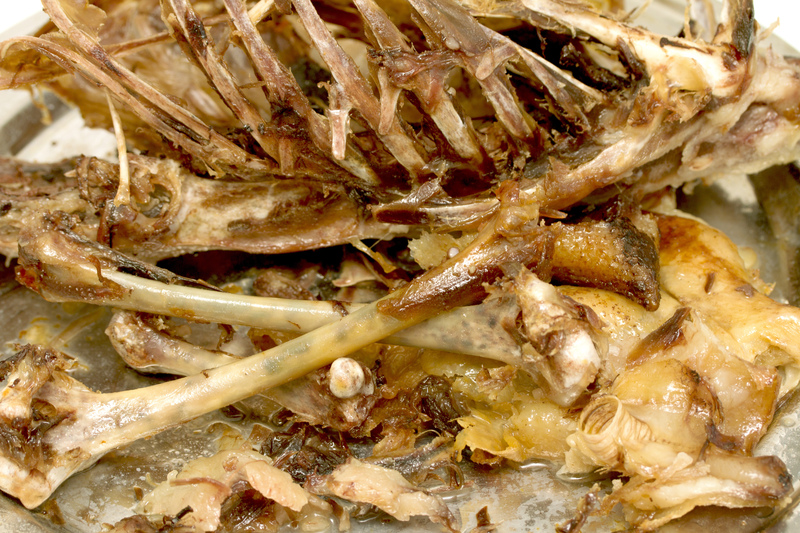Make a Difference by Disposing PPE Waste Correctly
Personal Protective Equipment, commonly known as PPE, became a household term during the COVID-19 pandemic. Items like masks, gloves, face shields, and gowns have become essentials in preventing the spread of diseases and safeguarding public health. Unfortunately, the improper disposal of PPE waste has created a new environmental challenge that affects our communities, wildlife, and even our own health. If we act now and choose to dispose of PPE waste responsibly, each of us can make a significant, positive difference.
Understanding PPE Waste: Why the Issue Matters
PPE waste refers to the used masks, gloves, gowns, and protective gear that have served their purpose and are no longer needed. With billions of people worldwide using disposable PPE, the volume of discarded items has skyrocketed. Improperly discarded PPE is now commonly found in streets, parks, rivers, and oceans, threatening natural ecosystems and public health.
The Global Impact of Incorrect PPE Waste Disposal
When PPE waste is not disposed of properly, it can:
- Pollute water bodies: Disposable masks and gloves often end up in lakes, rivers, and seas, where they slowly break down into microplastics, harming aquatic life.
- Endanger wildlife: Birds, fish, and other animals can ingest PPE or get entangled, leading to injury or death.
- Spread disease: Used PPE can carry pathogens. If touched or handled incorrectly, it can spread viruses and bacteria, making the objects a public health hazard.
- Add to landfill problems: Most single-use PPE items are not biodegradable. This means they persist in landfills for decades, contributing to the growing waste crisis.

Types of PPE Waste & Their Disposal Challenges
PPE includes several everyday items, each posing unique disposal challenges:
- Masks (Surgical & Respirators): Often made from layers of plastic fibers, these are not recyclable in standard facilities.
- Gloves (Latex, Nitrile, Vinyl): Most are single-use and may be contaminated after just one use, making them risky for recycling.
- Face Shields & Goggles: Usually constructed from mixed plastics, adding complexity to their end-of-life management.
- Gowns & Aprons: Commonly composed of non-woven plastics which are durable but non-biodegradable.
The Rise in PPE Pollution Since 2020
A recent study estimated that over 129 billion face masks and 65 billion gloves are being used every month worldwide since the start of the pandemic. Unfortunately, less than 10% of this massive stream is properly disposed of. The rest can be found clogging water systems, littering city streets, or even washed up on international beaches. Clearly, there is an urgent need for sustainable PPE waste management solutions.
Why Correct Disposal of PPE Waste Is Crucial
-
Environmental Protection:
PPE waste that ends up in nature can release microplastics and toxic substances, damaging habitats and food chains. -
Public Health and Safety:
Contaminated PPE can spread disease when scavenged by animals or handled by sanitation workers. -
Community Pride:
Cleaner neighborhoods foster pride and community well-being. -
Regulatory Compliance:
Many regions have specific regulations about how hazardous waste, including PPE, must be handled.
How to Dispose of PPE Waste Correctly
Proper PPE waste disposal doesn't have to be complicated. Below, you'll find practical steps to dispose of everyday PPE responsibly while minimizing your impact on the environment and reducing the chances of spreading disease.
1. Use a Separate Trash Bag for PPE Waste
Always collect used masks, gloves, and any other PPE in a dedicated trash bag, ideally a sealed one. This keeps potentially contaminated items from mixing with recyclable or household waste and protects anyone handling trash from contact with hazardous materials.
2. Do Not Recycle Used PPE in Home Bins
- Masks and gloves cannot be recycled via curbside recycling programs, as they might be contaminated and require special processing.
- Sorting contaminated PPE with recyclables can threaten sanitation workers and pollute recycling streams.
3. Seal and Label Bags Containing PPE Waste
- Seal the bag tightly to avoid exposure.
- Label bags as 'PPE waste' if you're disposing of large quantities or run a business/facility, to alert sanitation staff.
4. Follow Local Guidelines for PPE Waste Disposal
Many municipalities have issued specific instructions for the disposal of PPE waste. Check with your local waste management authority for up-to-date guidance. Hospitals, clinics, and commercial premises often have more stringent rules, including designated bins or on-site hazardous waste disposal systems.
5. Never Litter PPE
- Never throw masks, gloves, or other PPE on the ground.
- Dispose of single-use PPE in a waste bin, and if there are none nearby, take it home to dispose of safely.
6. Consider Reusable Alternatives Where Possible
If your risk level permits, switch to reusable masks or face shields that can be washed and sanitized. This reduces your personal contribution to the PPE waste problem.
Special Cases: PPE Disposal in Workplaces, Schools, and Healthcare Facilities
Organizations have a legal and ethical duty to manage large-scale PPE waste. If you manage a business, office, or school, here's what you can do:
- Provide clearly labeled PPE waste bins in easily accessible locations.
- Train staff on protocols for handling contaminated waste safely.
- Use contracted hazardous waste services for bulk PPE, especially in healthcare environments.
- Encourage a zero-litter policy for everyone on premises.
- Keep up with regulations and guidelines that may change as the pandemic evolves.
Innovative Solutions and Green Initiatives for PPE Waste
As the world searches for sustainable answers, several innovative projects and companies have begun developing solutions to reduce and process PPE waste, including:
-
Specialized PPE recycling programs:
Some companies now offer specialty bins that safely collect masks and gloves to be processed in facilities designed to handle hazardous materials. -
Research into biodegradable PPE:
Startups and researchers are developing face masks and gloves using compostable materials such as plant fibers and bioplastics. -
Upcycling and art initiatives:
Certain non-contaminated PPE materials are being upcycled into building materials, furniture, or art, raising awareness about waste and sustainability. -
Corporate take-back schemes:
Manufacturers of PPE have started producer responsibility programs to collect and recycle their products after use.
The Role of Individuals: How You Can Make a Real Difference
- Educate yourself: Stay informed about best practices for PPE disposal.
- Share knowledge with family, friends, and colleagues--spreading awareness is a powerful first step.
- Lead by example--always dispose of your own PPE responsibly.
- Support community initiatives or businesses that promote responsible PPE collection and recycling.
- Speak up: If you notice PPE litter in your area, contact local authorities to ensure proper waste management is prioritized.
Simple Everyday Tips for Responsible PPE Waste Disposal
- Carry a zip-lock or small bag in your purse or car for discarding used masks and gloves.
- Never flush masks or gloves down the toilet--they can clog sewage systems and harm aquatic life.
- If reusing cloth masks, wash them regularly as per health authority guidelines.
- Participate in local clean-up campaigns targeting PPE waste in parks and public spaces.
Myths & Facts About PPE Waste Disposal
There's a lot of confusion around PPE waste. Let's clear up common misconceptions:
-
Myth: Masks and gloves are compostable.
Fact: Most disposable PPE is made from plastics that do not break down in compost bins. -
Myth: It's safe to throw PPE in regular recycling bins.
Fact: Used PPE is considered contaminated and is rejected by standard recycling facilities. -
Myth: One piece of littered PPE doesn't make a difference.
Fact: Every improperly discarded mask or glove adds up--contributing to wildlife deaths, pollution, and community health risks.

Frequently Asked Questions on Disposing PPE Waste
-
Q: Can I recycle disposable masks at home?
A: No. Home recycling bins aren't set up to handle contaminated PPE. Specialized recycling programs are required. -
Q: Is it okay to burn PPE waste?
A: Burning plastic PPE can release harmful toxins. Use municipal waste systems or professional hazardous waste services. -
Q: What should I do if I see discarded PPE in public places?
A: Notify local authorities or organize a safe community clean-up using gloves and sealed bags. -
Q: How long does PPE waste take to decompose?
A: Most PPE items can take hundreds of years to break down in a landfill.
Conclusion: Make a Positive Impact--Dispose of PPE Waste the Right Way
Correct PPE waste disposal is not just a minor action--it's a significant step toward a cleaner environment, healthier communities, and a sustainable future. By choosing to properly dispose of your PPE and encouraging others to do the same, you can be a part of the solution to this growing waste problem.
Together, let's make a difference. Whether at home, work, or in public spaces, take the lead in the responsible disposal of PPE waste. Your actions, however small they may seem, help protect the planet for generations to come.
For more information on how to make a difference by disposing PPE waste correctly, visit your local government's waste management website or support organizations working towards cleaner, greener communities.
Remember: Every Mask and Glove Counts!
Be part of the change. Safeguard your health, protect the environment, and set an example by disposing PPE waste the right way.